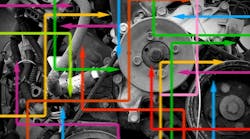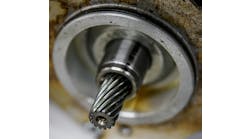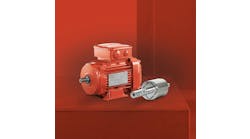When it comes to motors in your automation, what do you specify? For a custom machine builder or OEM, it is usually a good practice to consider the cost; however, the application, operation and environment are the big players in motor selection. It's not just about voltage, torque and rpm. The application places specific requirements on motor performance beyond these basic specifications.
So, what type of motor is appropriate for an application? The first thought may be to contact a local electrical distributor or automation vendor. While these distributors, vendors and industrial manufacturers are happy to help with knowledgeable sales personnel and detailed websites, they are going to ask some questions, which will be about the application requirements.
The motor suppliers and manufacturers will have much to say about the type of motor, as well as the innovation and performance of their products, whether they are ac or dc, synchronous or inductive, servo or stepper motors. Yet, resist the urge to select a type of motor until each application's load, speed and operating characteristics are defined.
Obviously, a motor is selected to meet the demands of the application, so the demands should be defined. A big part of these demands are based on the type of load the motor output drives. What is the motor moving? The motor load includes a variable or constant torque and a variable or constant horsepower. The motor may also require positional control or torque control.
Some loads are constant torque—the load doesn't change. For example, the lever arm or roll diameter remains constant. In some constant-torque applications, the horsepower may vary—more work needs to be done or more force is needed to do the work. Basic examples of these constant-torque and variable-horsepower applications include compressors, cranes, conveyors and some pumps—gear-type or positive displacement. Compressing at a higher air pressure, lifting different weight loads with the crane or adding a loaded pallet to the conveyor varies the motor horsepower needed to move the load. Define the work. A wide variety of ac and dc motors work well in these applications.
There are also constant-horsepower and variable-torque applications. A simple example of this is an unwind or rewind application. The material speed remains constant while the roll diameter decreases or increases. The constant material speed ensures a constant horsepower while the roll diameter—lever arm—changes, varying the torque. This application commonly used dc motors many decades ago. More recently, servo motors or ac motors with closed-loop control are popular choices. With these heavy loads, don't forget about regenerative braking as a means to control the regenerative power when stopping.
There are also variable horsepower and torque applications such as mixers/agitators, fans and centrifugal pumps. These are the type of applications where energy efficiency is often discussed. Small changes in the speed of these motors results in large reductions in energy usage. Motor speed plays a large role in these applications. Can you run the mixer, fan or pump slower at times? When the motor speed increase, the load increases, which requires more horsepower and more torque.
The speed of a motor is always part of the motor selection discussion, as is an application's need for frequent or fast starts and stops. Will the motor need to start and stop or reverse direction often? Does it need to do so quickly? Will the motor run at constant speed, or does it need to be variable? The answers, in addition to determining the type of motor needed, such as an inverter-duty ac motor, helps to determine if across-the-line starters or variable frequency drives (VFDs) are needed.
More advanced motor applications require accurate and repeatable positional control, torque control and speed control. These applications include single- and multiple-axis gantries, pick-and-places and web-handling machines. While a stepper motor running open loop may satisfy the requirements of these applications, closed-loop control using servo motors is often required.
Do you really need a servo motor? An ac or dc motor with encoder feedback can also be used in many high-performance applications, providing good speed regulation and reasonable positioning capability. For example, an ac motor specifically designed for inverter or vector duty works well in variable-speed applications and can provide constant-torque capability to zero speed.
In what environment will the motor be installed? The motor selected for industrial applications must be robust and capable of handling the environmental conditions. Don't make the mistake of specifying a single-phase ac induction motor, often used on a small appliance such as a washer or dryer, to control small loads on a machine. There are significant differences between a continuously running industrial machine and a washing machine cleaning six or eight loads of laundry a week. The appliance motor may work great, but there is more than just dust present in industrial applications. Motors need to survive extreme environmental conditions, including high and low temperatures, varying electrical demands and contaminants. A properly selected motor will provide optimal performance and a long service life in harsh environments. Washdown-duty, stainless-steel and severe-duty are just a few requirements to consider depending on the industrial environment.
With the motor application understood and well defined, it's likely the solutions available are many. Although a machine with five different motor applications may require five different types of motors, keep the overall system in mind; using like or similar motors can reduce design complexity, startup time and spare-part needs.






